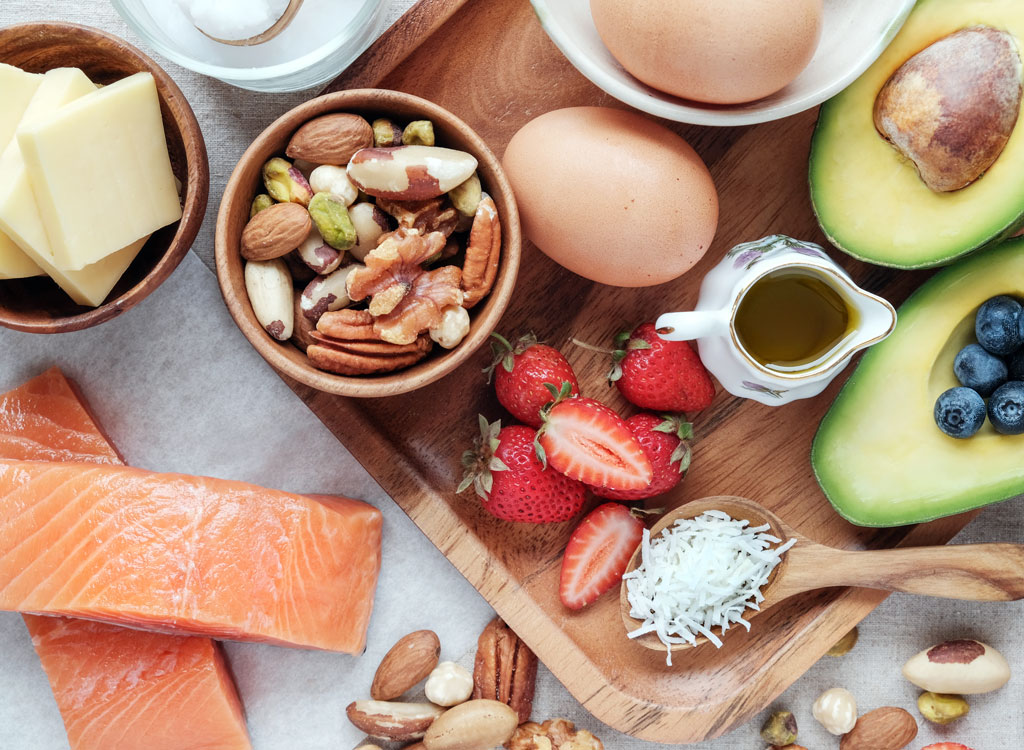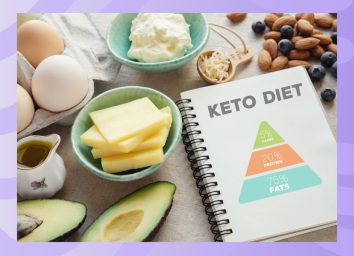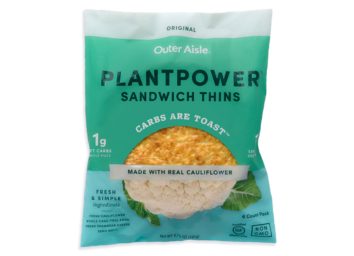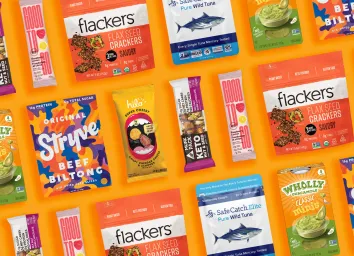Paleo vs. Keto: How to Know Which Low-Carb Diet Is Right for You

Whether it's on social media or at the gym, just about everybody has heard someone discussing two of the most popular trends in dieting today: paleo vs. keto. On the surface, they seem pretty similar. They focus on eating less processed food and grains, and emphasize eating more natural produce, and, of course, plenty of meat—never forget about the meat.
But, beyond that, the two diets actually take a very different approach to weight loss and meal planning. One even goes as far as to change your metabolic state. So, what is the difference between paleo vs. keto, and is one of the low-carb diets a better choice?
To find out, we went to the experts.
"Paleo and keto are in the top five diets that clients generally ask me about in the past year," said Laura Burak, MS, RD, CDN. "The low-carb trend is still sticking around because people have blamed them for so long. The truth is, they just don't understand carbs or how to incorporate them in a healthy way into their diets."
What is the keto diet?
The keto diet is a way of eating that allows the dieter's body to enter a state of ketosis, which occurs when the body shifts from burning stored sugar and carbohydrates for energy to burning stored fat. You know you are in ketosis when the stored fat cells begin to break down into molecules called ketones that are released into your bloodstream and flushed out in your urine, a process that can be measured with test strips from the drug store.
To get into ketosis, most dieters aim to eat under 20 net carbs per day, with 75 percent of your total calories coming from fat, 20 percent from protein, and 5 percent from carbs.
"Counting macros and only having 5-10 percent of your calories come from carbs is crazy and completely unsustainable in my opinion," Burak says.
This high-fat diet allows for a high consumption of foods that many conventional diets consider off-limits, like bacon, but strictly limits all sugars, including most fruit. For example, most keto-ers wouldn't be able to fit an apple into their allotted daily carb intake because it clocks in with more than 20 net carbs, exceeding the average daily allowance.
As for the benefits to the keto diet, Natalie Rizzo, MS, RD, and author of The No-Brainer Nutrition Guide for Every Runner, explains that some research, like a recent study in the American Journal of Clinical Nutrition, has indicated that, in addition to weight loss, the high-fat approach can make dieters feel less hungry overall.
Even with this benefit, however, the keto diet is not something Rizzo typically recommends for her clients, given its restrictive nature, especially when it comes to fruits and vegetables.
"It's too restrictive, and we don't know what eating this level of fat is going to do to people in the long run," Rizzo says. "There isn't enough long-term research to see if the positives outweigh the negatives."
Without the proper intake of produce, Rizzo says, dieters can expect to experience constipation.
When first entering a state of ketosis, many clients report experiencing a "keto flu." While not the real flu, the results can take a very real toll on your body. Rizzo says nausea, fatigue, headaches, and an overall feeling of being under the weather are the most common symptoms.
"This happens from carb withdrawal, and can last up to a week," Rizzo says. "You may also have smelly breath because ketones create acetone in the body, which causes bad breath."
While the keto trend is booming in popularity, Rizzo says that among her clients, paleo just isn't as popular as it used to be: "Paleo is losing a little bit of steam."
What is the paleo diet?
Paleo encourages people to eat like "cavemen," Rizzo says, foregoing grains, dairy, sugar, and processed foods.
Instead, dieters are able to indulge in nuts, seeds, berries, animal proteins, most vegetables, and fish. The diet is centered around what foods our ancestors could find to eat during the Paleolithic era, as long as 2.5 million years ago. It is based on the theory that this way of eating is what is most natural and healthy for our bodies, as we have not yet adapted to the agricultural practices that came to be about 10,000 years ago and changed our eating habits.
Some have even gone as far as to say the rise of farming, especially grains, dairy, and legumes, can be blamed for the proliferation of obesity, diabetes, and heart disease that is seen today. The paleo diet, they say, is the answer to these concerns.
For Burak, however, that may be a claim that the evidence doesn't fully support.
"As with any 'diet,' people usually start and stop them, and the 'rules' are unsustainable forever," Burak says. "I am never a fan of eliminating entire food groups without medical necessity, and this diet dismisses some nutritious sources of fiber-containing nutritious carbohydrates like oats and barley, legumes, and potatoes."
Paleo also asks people to give up dairy altogether, which Burak explains can be a necessary and healthy way to incorporate protein and calcium into a healthy diet.
Where paleo really gets it right is in its approach to processed and packaged food, she says.
"The biggest plus to following a more paleo way of eating is the elimination of processed, packaged food with tons of added sugar and preservatives," Burak says. "The focus of this diet is to eat natural real foods that don't come in packages, but we aren't cavemen anymore, and I don't think it is realistic and sustainable to completely eliminate packaged food at this point in our evolution."
While there are many restrictions on the actual food that can be eaten, one of the most significant ways that paleo differs from keto is in its approach to counting carbs and other macronutrients—there isn't a need with paleo. As long as you are eating the caveman-approved grouping of foods, there is no specified limit on the intake or specific ratio to hit of carbs, protein, and fat.
For many people, this counting-free approach is a major benefit and can help the diet feel more sustainable. However, in order for paleo to be used as a weight loss tool, the dieter should still aim to be in a caloric deficit to begin burning fat.
Paleo vs. keto: Is one low-carb diet actually better?
For Rizzo, there isn't yet a scientific consensus around paleo vs. keto. There are a few inconclusive studies to support the short-term effects of keto, but they have not yet stabilized success rates in the long-term. In regards to paleo, the verdict is still out altogether.
While she doesn't recommend either diet as a long-term, sustainable option, if Rizzo had to choose paleo vs. keto, she says she would suggest the paleo diet, as it allows for somewhat more flexibility than keto.
Burak takes a similar stance: "The basic principles of both focus on real food, lean proteins, and healthy fats, which should be the foundation for our diets in general, but if I had to choose a better option, paleo does not involve calculating and counting, which most people cannot sustain for long, so the winner is paleo."
With many of the restrictions and potential drawbacks with paleo and keto diets, many are left wondering how diets like this became so popular in the first place.
"When you follow a restrictive diet like this, you tend to cut out many of the empty calories in your diet from snack foods, desserts, and beverages," Rizzo says. "With that, you will definitely lose weight."
And, when a dieter begins losing weight and reaching their goals, it can feel like a chain reaction, inspiring others to use the same methodology to achieve theirs. Where this process has the potential to fail, however, is in its long-term sustainability. While eliminating whole food groups might be possible for a few weeks or even months, it is harder to maintain over the course of a lifetime, causing many to go back to old eating habits.
"I teach my clients to focus on eating real quality foods and finding a way to incorporate anything into their diets so that it becomes about choices they make, rather than rules," Burak says. "Rules are always made to be broken."








